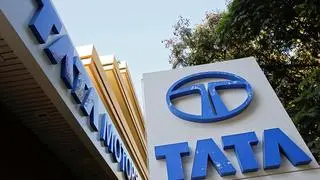It’s not common to see the HDFC Bank stock fall by over 4 per cent, reacting negatively to its earnings, when the headline numbers offered little to complain about.
Net interest income grew by 10 per cent year-on-year to ₹18,872 crore and net profit by 22.8 per cent year-on-year to ₹10,055 crore, though both missed the street’s expectation by a thin margin. But a deeper reading of numbers doesn’t bode well, and the biggest pain point is the slight decline in the bank’s profitability or net interest margin (NIM). At 3.9 per cent, NIM dipped by 21 basis points (bps) year-on-year in Q4.
Why NIM is important
Normally a small change like this won’t matter much. But for HDFC Bank, NIM at four per cent is like the holy grail. Even until two years ago, HDFC Bank had no competition with respect to its profitability. Today, the top private banks work near about the 4 per cent NIM threshold.
One of the critical factors responsible for the NIM contraction is a noticeable fall in the share of retail loans. At 39 per cent weightage to the total loan book, share of retail loans is at a near 10-year low. In FY20, the bank decided that it would increase its focus on corporate loans. The move was welcomed, given the heating up of the space. HDFC Bank was vocal about its pursuit of well-rated corporate loans, mainly PSU loans.
Today, competition in the corporate loan market isn’t any less, with lenders including HDFC Bank willing to offer credit at rates just shades above the repo rate of 4 per cent. Until December quarter, this change in strategy didn’t hurt the bank much.
But in Q4, with yield on advances falling by 72 bps year-on-year to 7.9 per cent, investors are beginning to think twice. Should growth come at the cost of NIM, then what really is the distinguishing factor between HDFC Bank and its peers?
Why not retail?
There’s another question too. Is HDFC Bank closer to ceding its position as the country’s largest retail lender? At ₹5.32 lakh crore of retail loans in Q4, the gap between HDFC Bank and ICICI Bank is steadily narrowing. In fact, most private banks (also State Bank of India) presently have a retail book that accounts for over 55 per cent of their total loan book. In such circumstances, HDFC Bank not so aggressively fighting out competition when it’s doing so on the corporate side is a point to ponder over.
Does it mean that the current quality of retail book doesn’t warrant a price war or with the retail book posing enough trouble to bank’s asset quality during the pandemic (restructured loans at 1.14 per cent of total loans and most of it coming from the retail portfolios), it warrants taking the foot off the pedal for a while? After all, a more stable and secure home loan portfolio is set to be added to the bank’s books in a year or so.
But then again, territories such as two-wheeler and auto loans, which have been important parts of HDFC Bank’s retail portfolio, are yet see growth pick-up. Instead, personal loans, credit cards and loan against property remain the drivers in the retail space and this isn’t very comforting.
Analysts at Kotak Institutional Equities say the bank’s ability to differentiate itself from an underwriting perspective has not come out well during Covid. “The lack of clear differentiation (for HDFC Bank) is likely to weigh upon the valuations that the franchise would command,” the brokerage notes. In fact, at BL Portfolio, we’ve been cautioning readers to brace for a correction in valuations.
Related Stories
How to play the reset in HDFC group stocks
From high growth picks, stocks in the HDFC Group are entering the ‘steady-state’ zoneRelated Stories
Why you should buy HDFC Ltd. shares
The mortgage lender’s shares at ₹2460 levels offer better upside over the HDFC Bank’s stockWith Q4 results reiterating these concerns, the time has now come for investors of HDFC Bank to reset their expectations around the stock.








Comments
Comments have to be in English, and in full sentences. They cannot be abusive or personal. Please abide by our community guidelines for posting your comments.
We have migrated to a new commenting platform. If you are already a registered user of TheHindu Businessline and logged in, you may continue to engage with our articles. If you do not have an account please register and login to post comments. Users can access their older comments by logging into their accounts on Vuukle.